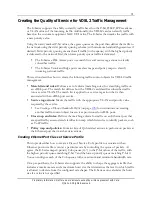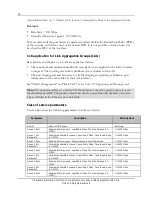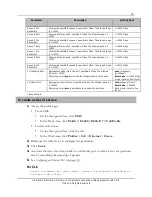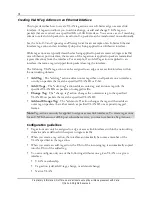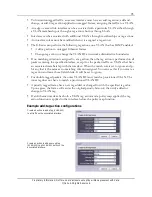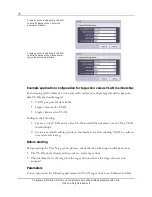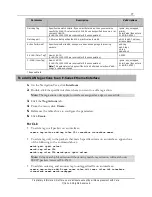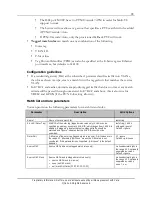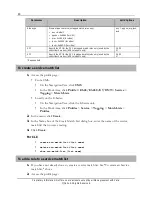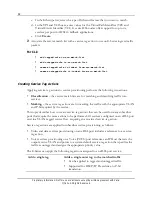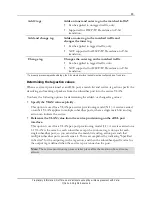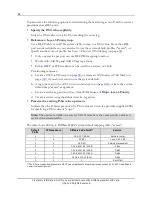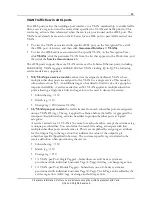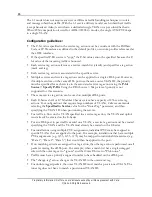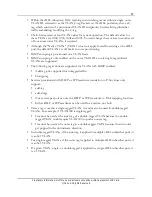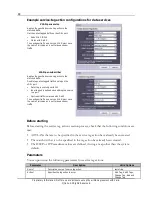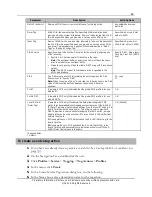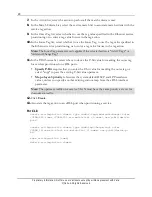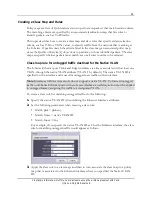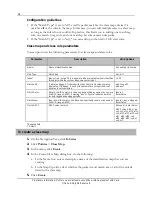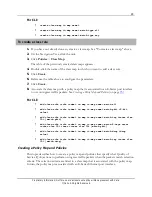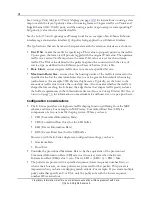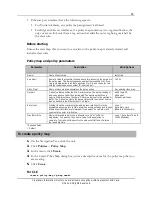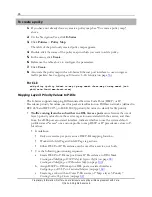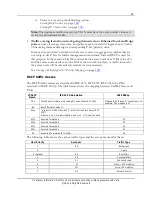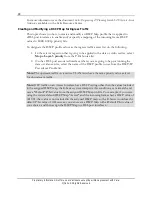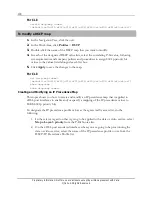
85
Proprietary Information: Not for use or disclosure except by written agreement with Calix.
© Calix. All Rights Reserved.
VLAN Traffic flow in xDSL ports
For xDSL ports, rather than adding a port interface to a VLAN membership to enable traffic
flow, a service-tag action must be created that specifies the VLAN and traffic priority. This
service-tag action is then referenced when the service is provisioned on the xDSL port. The
VLAN must already be created on the E-Series for an xDSL port to pass traffic carried on a
VLAN.
To view the VLANs associated with specific xDSL port, on the Navigation Tree, click
the xDSL port of interest, and then click
Associated Interface > VLANs
.
To view the xDSL services associated with a specific VLAN, on the Navigation Tree,
click
VLANs
, click the particular VLAN from the list that appears in the Work Area, and
then click the
Service Associations
tab.
The xDSL ports support the same VLAN services as the E-Series Ethernet ports, including
IEEE 802.1Q VLAN tagging and IEEE 802.1ad VLAN stacking (Q-in-Q). The following
service models are supported.
N:1/VLAN-per-service model:
each service is assigned a dedicated VLAN where
multiple subscriber ports are assigned to the VLAN for a single service. This model is
often referred to as N:1. An additional tag can be added to limit the size of a group for
improved reliability. A service carried on an N:1 VLAN applies to multiple subscriber
ports, allowing a single match list and tag action to be used to denote the service.
Subscriber tag = 110
Match tag = 110
Change tag = 200 (service VLAN)
1:1/VLAN-per-port model:
the traffic frames from each subscriber port are assigned a
unique VLAN ID (tag). The tag is applied to a frame before the traffic is aggregated for
transport. An additional tag can also be added to group subscriber ports in logical
categories.
A service carried on a 1:1 VLAN is the same for each subscriber, except the customer tag
is unique per subscriber. You can define the match list and tag action pair such that
multiple subscriber ports can reference it. This is accomplished by assigning an attribute
for the Output Tag in the tag action that indicates the value of the output tag is
subscriber specific (Specified in Service). The customer specific tag is included in the
service definition when provisioning the service.
Subscriber tag = 110
Match tag = 110
Change tag = 110
1:1 VLAN-per-Port, Single Tagged – Subscribers on an E-Series system are
provisioned with individual Customer Tags (C-Tags). Add tag, or change tag action.
1:1 VLAN-per-Port, Double Tagged – Subscribers on an E-Series system are
provisioned with individual Customer Tags (C-Tags). The S-Tag can be added by the
service tag action. Add 2-tags, or change-and-add tag action.

